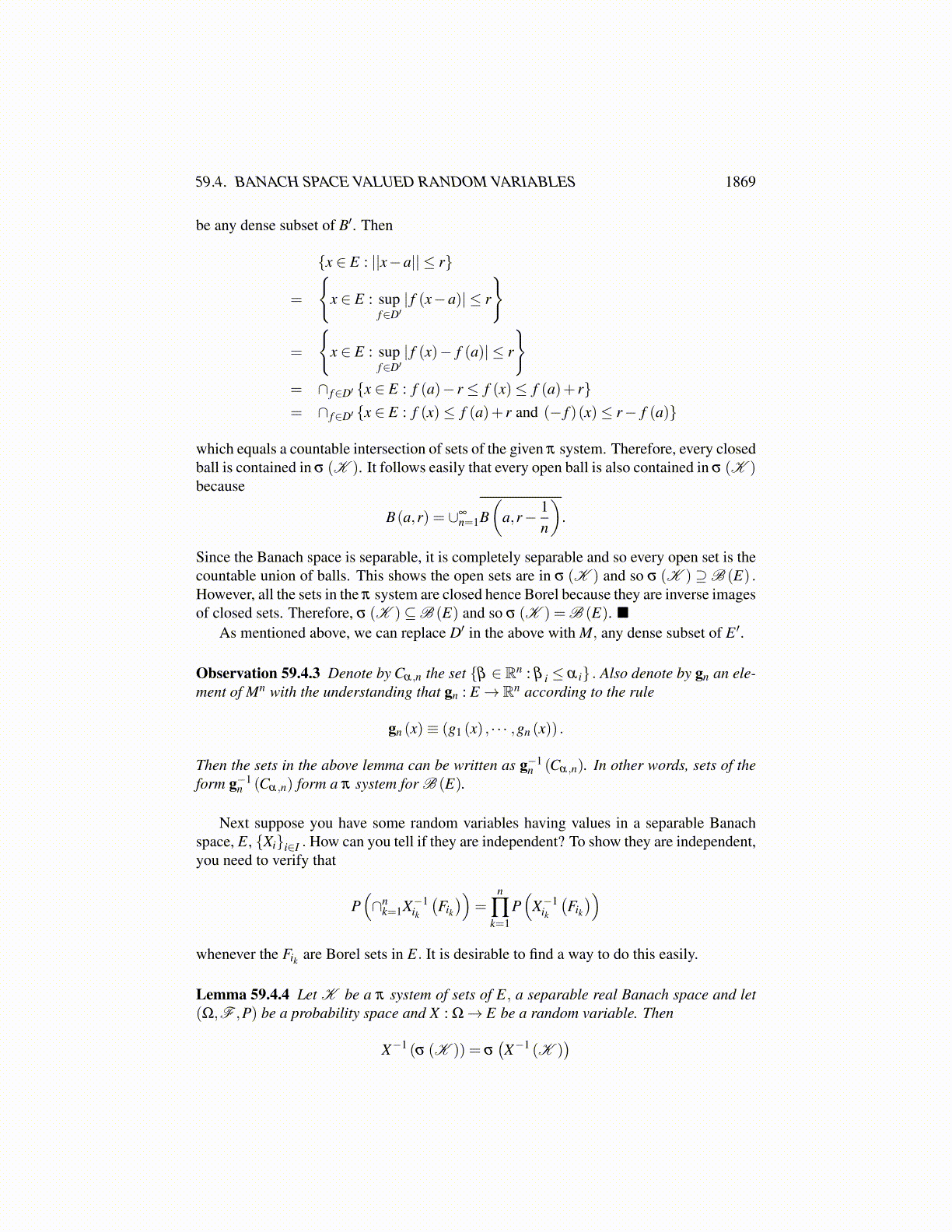
59.4. BANACH SPACE VALUED RANDOM VARIABLES 1869
59.4 Banach Space Valued Random VariablesRecall that for X a random variable, σ (X) is the smallest σ algebra containing all the setsof the form X−1 (F) where F is Borel. Since such sets, X−1 (F) for F Borel form a σ
algebra it follows σ (X) ={
X−1 (F) : F is Borel}.
Next consider the case where you have a set of σ algebras. The following lemma ishelpful when you try to verify such a set of σ algebras is independent. It says you onlyneed to check things on π systems contained in the σ algebras. This is really nice becauseit is much easier to consider the smaller π systems than the whole σ algebra.
Lemma 59.4.1 Suppose {Fi}i∈I is a set of σ algebras contained in F where F is a σ
algebra of sets of Ω. Suppose that Ki ⊆Fi is a π system and Fi = σ (Ki). Suppose alsothat whenever J is a finite subset of I and A j ∈K j for j ∈ J, it follows
P(∩ j∈JA j) = ∏j∈J
P(A j) .
Then {Fi}i∈I is independent.
Proof: I need to verify that under the given conditions, if { j1, j2, · · · , jn} ⊆ I and A jk ⊆F jk , then
P(∩n
k=1A jk
)=
n
∏k=1
P(A jk
).
By hypothesis, this is true if each A jk ∈K jk . Suppose it is true whenever there are at mostr−1≥ 0 of the A jk which are not in K jk . Consider
∩nk=1A jk
where there are r sets which are not in the corresponding K jk . Without loss of generality,say there are at most r−1 sets in the first n−1 which are not in the corresponding K jk .
Pick(A j1 · · · ,A jn−1
)let
G(A j1 ···A jn−1
) ≡{
B ∈F jn : P(∩n−1
k=1A jk ∩B)=
n−1
∏k=1
P(A jk
)P(B)
}I am going to show G(
A j1 ···A jn−1
) is closed with respect to complements and countable
disjoint unions and then apply the Lemma on π systems. By the induction hypothesis,K jn ⊆ G(
A j1 ···A jn−1
). If B ∈ G(A j1 ···A jn−1
),n−1
∏k=1
P(A jk
)= P
(∩n−1
k=1A jk
)= P
((∩n−1
k=1A jk ∩BC)∪ (∩n−1k=1A jk ∩B
))= P
(∩n−1
k=1A jk ∩BC)+P(∩n−1
k=1A jk ∩B)
= P(∩n−1
k=1A jk ∩BC)+ n−1
∏k=1
P(A jk
)P(B)